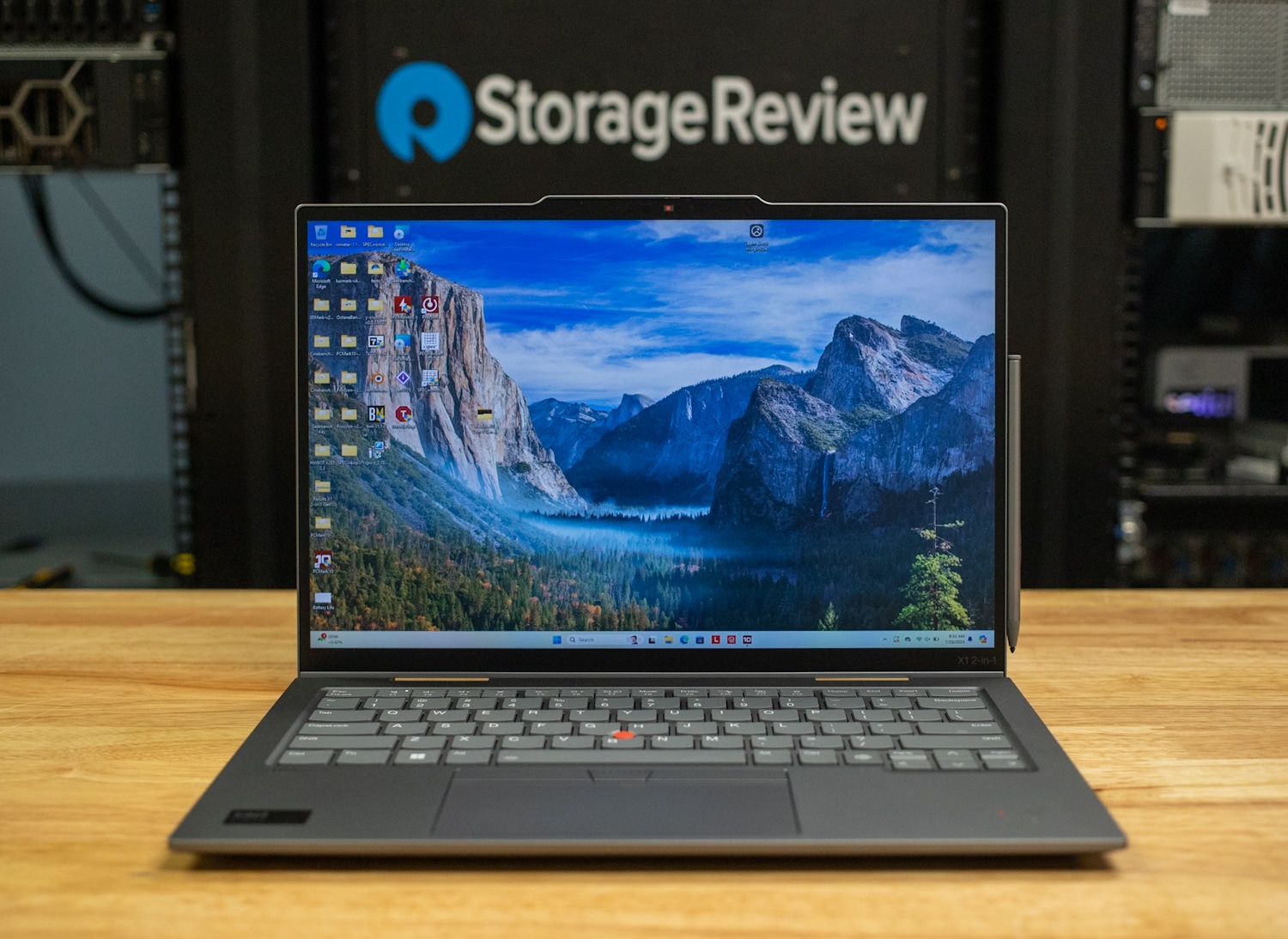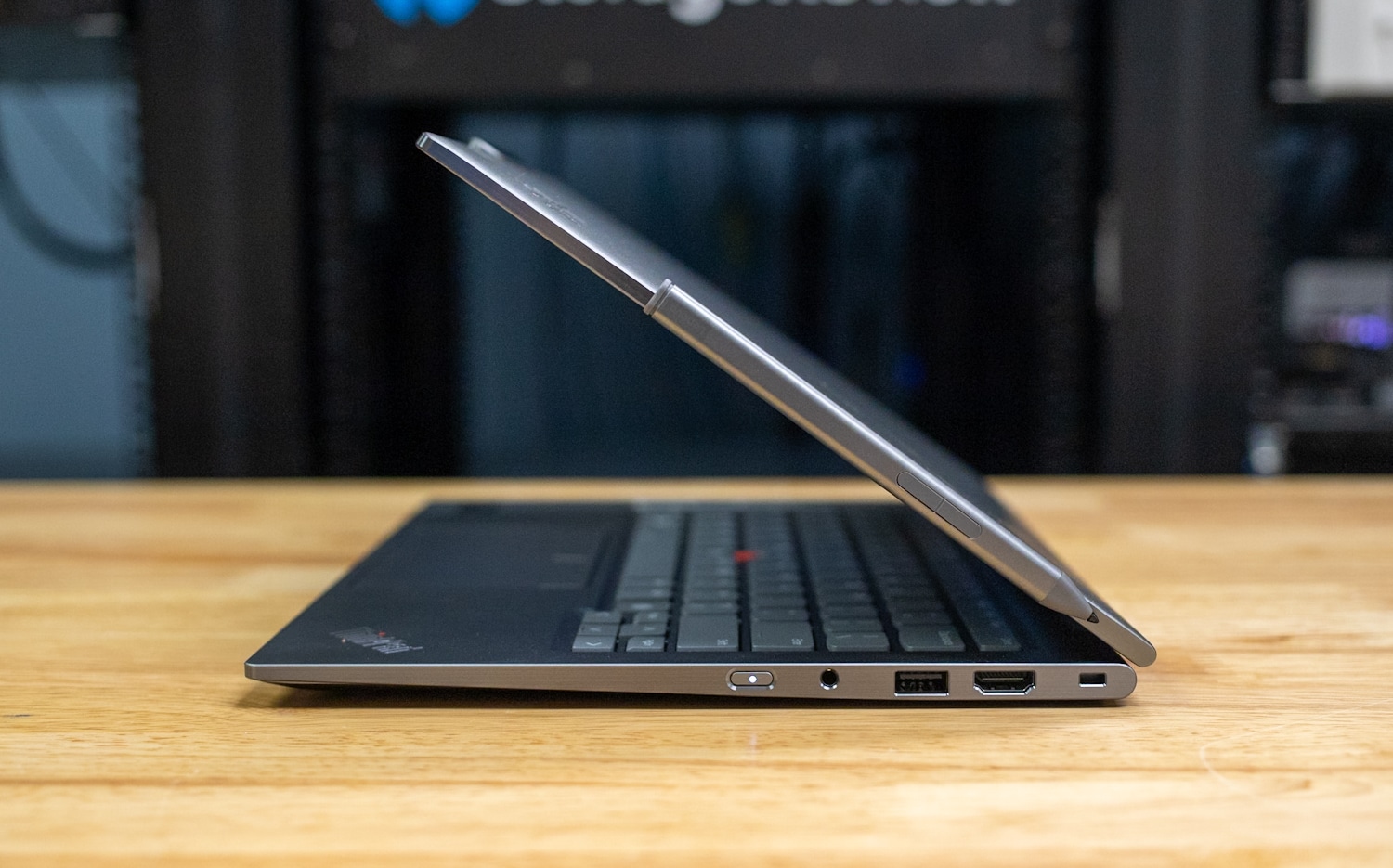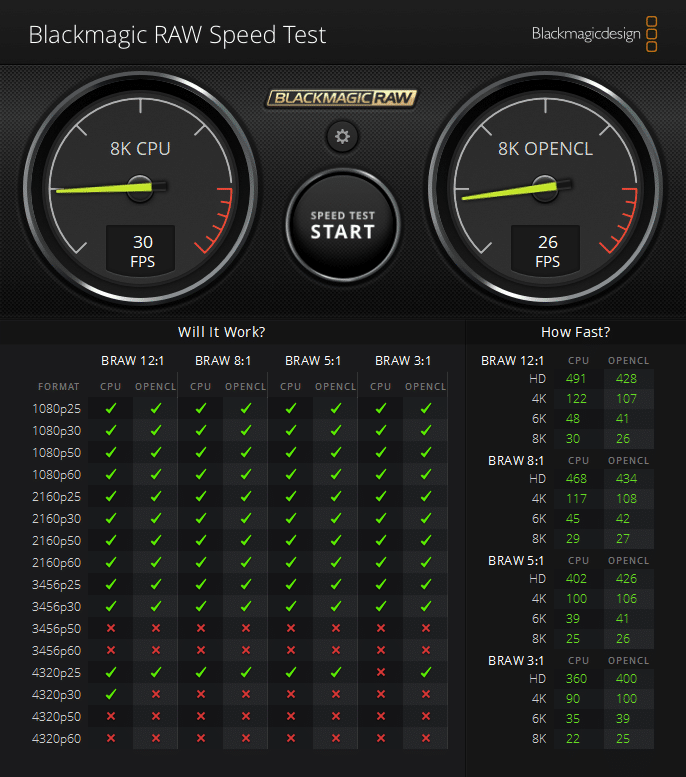The Lenovo ThinkPad X1 2-in-1 Gen 9 offers superb build quality, comfortable input devices, good screen options, and long battery life.
The ThinkPad X1 2-in-1 Gen 9 gets a name change but maintains its status as an excellent business-focused convertible laptop.
Lenovo ThinkPad X1 2-in-1 Gen 9 Specifications
Though part of the ThinkPad X1 line, the ThinkPad X1 2-in-1 Gen 9 is not just a convertible version of the ThinkPad X1 Carbon Gen 12. This laptop isn’t quite as high-end in some respects, mainly build materials which we’ll cover later.
The ThinkPad X1 2-in-1 used to be called the ThinkPad X1 Yoga, but Lenovo dropped the Yoga designation this year. Let’s face it: Yoga didn’t really fit into a business environment.

This laptop is based around Intel’s “Meteor Lake” Core Ultra U-class processors with a 15-watt power rating for sufficient everyday pep, but they aren’t ideal for heavy loads, for which you’ll want a desktop replacement H- or HX-class chip. The Core Ultra 7 165U with Intel vPro remote management is the top choice, featuring 12 cores and 14 threads.
Graphics are built into the CPU as merely “Intel Graphics”, which share the same technology as the Arc graphics in the Core Ultra H-class chips but aren’t as powerful. For this type of laptop, though, Intel Graphics ought to be more than enough.
The ThinkPad’s other specifications include up to 64GB of soldered LPDDR5X RAM and a single M.2 2280 Gen4 SSD. Its full specifications are as follows:
| Processor |
|
| Operating System |
|
| Graphics | Integrated Intel Graphics |
| Memory | Up to 64GB LPDDR5X 6400MHz |
| Storage | Up to 2TB PCIe Gen4 Performance SSD |
| Battery |
|
| Audio |
|
| Camera |
|
| Ports/Slots |
|
| Wireless |
|
| Display |
|
| Dimensions | 15.49mm x 312.8mm x 217.65mm / 0.61″ x 12.31″ x 8.57″ |
| Weight | Starting at 1.33kg / 2.94lbs |
| Sustainability – Material |
|
| Certifications/Registries |
|
| ThinkShield Security |
|
| Preloaded Software |
|
Lenovo ThinkPad X1 2-in-1 Gen 9 Build and Design
The Thinkpad X1 2-in-1 differentiates itself from most ThinkPads with its Luna Grey chassis. It looks more like a consumer IdeaPad model than a ThinkPad at a glance, but up close, the trademark red eraser head Trackpoint in the keyboard center clearly identifies it as a ThinkPad.
At 0.61 x 12.31 x 8.57 inches, the ThinkPad X1 2-in-1 is about the same size as the Dell Latitude 9450 2-in-1 (0.64 x 12.2 x 8.47 inches) though it’s much lighter, at 2.94 versus 3.38 pounds. That extra weight adds up when cradling this laptop as a tablet, which is accomplished by rotating the screen 360 degrees. It’s still far heavier than a typical tablet (an iPad, for instance, is about one pound), so the convertible mode is more of a convenience or niche feature. I’ve also never gotten used to the feeling of an exposed (but of course, deactivated) keyboard under my fingertips.
As I noted, this laptop isn’t just a convertible version of the ThinkPad X1 Carbon, being made exclusively of aluminum rather than a combination of aluminum and carbon fiber. The build quality is still excellent, though it doesn’t impart the same sense of luxury as the ThinkPad X1 Carbon.
The ThinkPad X1 2-in-1 breaks ThinkPad tradition by including a larger stylus that magnetically attaches to the side of the laptop. It’s much more comfortable and natural to hold than the skinny style of previous ThinkPad convertibles. Its only real downsides are that it doesn’t have a place inside the chassis, so it can get lost, and when stuck to the right side, if the pen is on the body and not the lid, it covers the power button.
Port selection is brief but effective, with two Thunderbolt 4/USB4/USB Type-C ports, two USB Type-A ports (5Gbps), a 3.5mm headphone/microphone jack, and an HDMI 2.1 video output. The power adapter can be plugged into either USB-C port. The variety is appreciated; the Latitude 9450 2-in-1 only has USB-C ports. That said, there’s no media card reader or physical SmartCard slot.
Wireless WAN (4G/5G) equipped models (ours isn’t one) also have a Nano SIM slot. Internally, the laptop has Intel Wi-Fi 6E and Bluetooth 5.3 wireless. The power button is also on the side of the laptop.
Lenovo earns bonus points for considering the environment when producing this ThinkPad:
- 75% recycled aluminum on top cover (A side)
- 90% recycled magnesium on keyboard frame (C side) for WWAN configurations
- 75% recycled aluminum on keyboard frame (C side) for WLAN configurations
- 55% recycled aluminum & 45% hydro-aluminum on bottom cover (D side)
- 90% post-consumer content (PCC) recycled plastic used in speaker enclosure
- 90% PCC recycled plastic used in the battery enclosure
- 90% PCC recycled plastic used in power adaptor
- 30% PCC recycled plastic in cable holders
- 85% PCC recycled plastic in keycaps
- Low-temperature solder on memory modules, SSD board, & fingerprint module
- Forest Stewardship Council® certified plastic-free packaging with bamboo-sugar cane packaging & standard cushions
Lenovo ThinkPad X1 2-in-1 Gen 9 Screen and Keyboard
This ThinkPad uses a 14-inch diagonal touch screen with a 16:10 aspect ratio that has plenty of real estate for viewing documents side by side. The 1920×1200 base screen has 400 nits of brightness and a 60Hz refresh rate; a privacy version of that screen bumps the brightness to 500 nits. There’s also a 2880×1800 OLED screen with a smoother 120Hz refresh rate as the top option. All the display options support touch.
Above the screen is a standard 1080p webcam; a sharper 2160p webcam is optional. Both webcams support infrared for facial recognition. There’s a sliding privacy shutter, but we would prefer a webcam kill switch that physically disconnects the webcam from the laptop for ultimate security.
ThinkPad keyboards remain the best in the business as far as this writer is concerned. The keys have a solid tactile feel that I find comfortable for long typing sessions. The superb layout has a separated arrow key cluster as well as dedicated Home and End keys along the top row. The F12 key is user-programmable in the included Lenovo Vantage app. The white backlighting can be activated by pressing Fn + spacebar; it stands out against the dark gray keys, though not as well as it would against a black keyboard.
Changes for this generation include a fingerprint reader “key” next to the right Ctrl key, though there is no Copilot key as we’re seeing on some newer laptops. The other major change is – gasp – Lenovo has gone to the “dark side” and now has the Ctrl and Fn keys at the bottom left in their usual positions; ThinkPads have traditionally had these keys interposed. Diehard ThinkPad users (myself included) can still virtually swap the keys in Vantage.
Meanwhile, the glass touchpad has a smooth surface with plenty of room. The three buttons above it are for the pointing stick.
Upgrading the Lenovo ThinkPad X1 2-in-1 Gen 9
The bottom cover of the ThinkPad X1 2-in-1 comes off after undoing four Phillips-head screws.
Upgradeable components include the battery pack and the M.2 2280 Gen4 SSD. The RAM is of the LPDDR5X i.e., soldered variety and can’t be upgraded.
Lenovo ThinkPad X1 2-in-1 Gen 9 Performance
The ThinkPad X1 2-in-1 Gen 9 we were sent has an Intel Core Ultra 7 155U processor, 16GB of RAM, and a 1TB SSD. It retails for about $2,082, but it may be had for less with coupons. (Lenovo’s weekly sales can drastically change the price.) The $1,638 base model has a Core Ultra 5 125U and a 512GB SSD. All configurations use integrated Intel Graphics.
We’re comparing this ThinkPad to the Dell Latitude 9450 2-in-1, which we reviewed with a Core Ultra 7 165U, 32GB of RAM, and a 512GB SSD. Its CPU is theoretically faster, but often times the thermal solutions are more important than the CPUs in laptops like these.
Luxmark
A 3D benchmark we will be looking at is LuxMark, an OpenCL GPU benchmarking utility. The ThinkPad just trailed, suggesting its integrated GPU may not be as fast.
| Luxmark (Higher is better) | ||
| Lenovo ThinkPad X1 2-in-1 Gen 9 (Core Ultra 7 155U) | Dell Latitude 9450 2-in-1 (Core Ultra 7 165U) | |
| Hallbench | 1,387 | 1,534 |
| food | 775 | 666 |
7-Zip Compression
We have also started running 7-Zip’s built-in memory benchmark on laptops. The laptops scored similarly, a predictable result given they use a similar CPU and type of memory.
| 7-Zip Compression Benchmark | ||
| Lenovo ThinkPad X1 2-in-1 Gen 9 (Core Ultra 7 155U) | Dell Latitude 9450 2-in-1 (Core Ultra 7 165U) | |
| Compressing | ||
| Current CPU Usage | 914% | 649% |
| Current Rating/Usage | 3.950 GIPS | 6.698 GIPS |
| Current Rating | 36.092 GIPS | 43.476 GIPS |
| Resulting CPU Usage | 645% | 779% |
| Resulting Rating/Usage | 6.459 GIPS | 5.495 GIPS |
| Resulting Rating | 39.827 GIPS | 40.511 GIPS |
| Decompressing | ||
| Current CPU Usage | 1093% | 1125% |
| Current Rating/Usage | 4.225 GIPS | 4.789 GIPS |
| Current Rating | 46.183 GIPS | 53.858 GIPS |
| Resulting CPU Usage | 1106% | 1104% |
| Resulting Rating/Usage | 4.516 GIPS | 4.632 GIPS |
| Resulting Rating | 49.937 GIPS | 51.083 GIPS |
| Total Rating | ||
| Total CPU Usage | 875% | 941% |
| Total Rating/Usage | 5.488 GIPS | 5.063 GIPS |
| Total Rating | 44.882 GIPS | 45.797 GIPS |
Blackmagic RAW Speed Test
Our next test is the new Blackmagic RAW Speed test. The Latitude proved faster here, though 8K playback on these laptops probably isn’t their intended usage.
| Blackmagic RAW Speed Test | ||
| Category | Lenovo ThinkPad X1 2-in-1 Gen 9 (Core Ultra 7 155U) | Dell Latitude 9450 2-in-1 (Core Ultra 7 165U) |
| 8K CPU | 30 fps | 35 fps |
| 8K OPENCL | 26 fps | 29 fps |
Blackmagic Disk Speed Test
With 3.8GB/s write and 3.7GB/s read, the OEM 1TB SSD in our ThinkPad is a respectable performer.
y-cruncher
y-cruncher is a multi-threaded and scalable program that can compute Pi and other mathematical constants to trillions of digits. Since its launch in 2009, it has become a popular benchmarking and stress-testing application for overclockers and hardware enthusiasts. Slightly lower clocks on the ThinkPad’s CPU may have caused it to trail here.
| y-cruncher (Total Computation Time) | Lenovo ThinkPad X1 2-in-1 Gen 9 (Core Ultra 7 155U) | Dell Latitude 9450 2-in-1 (Core Ultra 7 165U) |
| 1 billion digits | 77.718 seconds | 65.027 seconds |
| 2.5 billion | 227.561 seconds | 200.030 seconds |
Geekbench 6
Geekbench 6 is a cross-platform benchmark that measures overall system performance. You can find comparisons to any system you want in the Geekbench Browser. The ThinkPad also trailed the Latitude a bit here.
| Geekbench 6 (Higher is better) | Lenovo ThinkPad X1 2-in-1 Gen 9 (Core Ultra 7 155U) | Dell Latitude 9450 2-in-1 (Core Ultra 7 165U) |
| CPU Single-Core | 2,277 | 2,362 |
| CPU Multi-Core | 9,181 | 10,008 |
| GPU | 17,269 | 17,748 |
Cinebench R23
This benchmark uses all CPU cores and threads to generate an overall score. The Latitude was faster, but the ThinkPad scored close enough.
| Cinebench R23 (Higher is better) | Lenovo ThinkPad X1 2-in-1 Gen 9 (Core Ultra 7 155U) | Dell Latitude 9450 2-in-1 (Core Ultra 7 165U) |
| Multi-Core | 8,596 | 9,696 |
| Single-Core | 1,622 | 1,748 |
Cinebench 2024
We also started running the latest Cinebench test. The results here mirrored Cinebench R23.
| Cinebench 2024 (Higher is better) | Lenovo ThinkPad X1 2-in-1 Gen 9 (Core Ultra 7 155U) | Dell Latitude 9450 2-in-1 (Core Ultra 7 165U) |
| Multi-Core | 510 | 561 |
| Single-Core | 95 | 99 |
UL Procyon AI Inference
UL’s Procyon estimates a workstation’s performance for professional apps. We suspect our Latitude severely underperformed in this test since the Lenovo proved abnormally faster.
| UL Procyon Average Inference Times (Lower is better) | Lenovo ThinkPad X1 2-in-1 Gen 9 (Core Ultra 7 155U) | Dell Latitude 9450 2-in-1 (Core Ultra 7 165U) |
| MobileNet V3 | 1.86 | 3.71 |
| ResNet 50 | 21.27 | 48.00 |
| Inception V4 | 65.13 | 147.98 |
| DeepLab V3 | 68.96 | 147.95 |
| YOLO V3 | 170.84 | 348.92 |
| Real-ESRGAN | 6,872.91 | 10,423.52 |
| Overall Score | 64 | 32 |
PCMark 10 Battery Life
Our last test is the battery test built into PCMark; we use the Moden Office preset. We only have numbers for the ThinkPad in this test. This runtime suggests the ThinkPad will be able to last an entire workday unplugged and perhaps a little longer. For reference, we clocked 14 hours and 40 minutes from the ThinkPad X1 Carbon Gen 12.
| PCMark 10 Battery Test (Higher is better) | Lenovo ThinkPad X1 2-in-1 Gen 9 (Core Ultra 7 155U) |
| Modern Office | 18 hours, 43 minutes |
Verdict
As expected from a top-of-the-line business machine, the ThinkPad X1 2-in-1 Gen 9 offers superb build quality, comfortable input devices, good screen options, and long battery life. It’s better as a laptop than a tablet, but the functionality can be worthwhile. Otherwise, the ThinkPad X1 Carbon Gen 12 is a better dedicated laptop. Noise-wise when running the X1 2-in-1, it pipes up a little when under load but nothing too crazy. The fans produce a consistent sound that is a bit lower than others. The fans are definitely noticable in a quiet room, but once you get into an environment with a higher noise floor, the fan noise blends right in. Overall this isn’t a laptop that is going to get you weird looks for it’s noise under load.
Among convertibles, we prefer this ThinkPad over the Dell Latitude 9450 2-in-1 because of its lighter weight (2.94 versus 3.38 pounds) and inclusion of USB-A and HDMI ports. Overall, the ThinkPad X1 2-in-1 gets our recommendation for a high-end business convertible.
Engage with StorageReview
Newsletter | YouTube | Podcast iTunes/Spotify | Instagram | Twitter | TikTok | RSS Feed







